In the Sutra of "Vu Lan - Filial Piety," the Buddha taught that the 15th day of the seventh lunar month is the day of Self-Confession, the time when monks and nuns complete their summer retreat. This is a time when the bodies and minds of monks and nuns are very pure, so offerings are made to them so that they may pray for their living parents to have increased blessings and longevity, and for their deceased ancestors to be reborn in the Pure Land.
Altar for the ritual of offering sacrifices during the Vu Lan festival at Phuoc Luu Pagoda (Trang Bang).
The "Chẩn tế" ritual is one of the important ceremonies of the Vu Lan festival, where "chẩn" means to help and "tế" means to save all sentient beings from the shore of delusion to the shore of enlightenment. According to folk beliefs, the seventh lunar month is also known as the "Month of Hell's Pardon," or the time when the gates of hell are opened to pardon the deceased. Among these deceased may be relatives from this life or many previous lives. Therefore, with compassion, temples in Tay Ninh have held the "Chẩn tế" ceremony to offer alms to all kinds of wandering souls and hungry ghosts who come to the Dharma assembly to worship the Buddhas, listen to sermons, receive alms, and rely on this merit to be reborn in the Pure Land.
The altar for the ritual of offering sacrifices is set up on a raised platform, with a golden altar where the ancestral tablets are placed, bearing the inscription "Respectfully inviting. Namo Shakyamuni Buddha, Namo Great Compassionate Avalokiteshvara Bodhisattva, Namo Venerable Ananda. May you bear great witness," and the ancestral tablets of the five Buddhas. Behind the golden altar is the scripture table, followed by the Lion Throne (Dharma Seat), which is the position of the head monk.
Opposite the altar is the altar of Ksitigarbha Bodhisattva, the Great Bodhisattva Ksitigarbha, and the Guardian Deity Veda, which also houses the memorial tablets for wandering souls, "Serving the four realms, six paths, three worlds, former enemies, fallen soldiers, and deceased compatriots." In the image of Ksitigarbha, red paper cut into the shape of fire is pasted over his mouth, according to the legend of "Spitting fire from his mouth to frighten ghosts and gods." To the left and right of the altar are the altars of the Ten Kings of Hell and the Four Heavenly Kings.
Offerings for the alms-giving ceremony.
The altar is decorated with many banners, flags, and slogans, and colorful paper is used to cut the altar decorations. The offerings include incense, flowers, candles, tea, fruit, food, rice, salt, water, cakes, offerings, small cakes, glutinous rice cakes, paper money, gold and silver paper money, and small change for the hungry ghosts… These are arranged into carts or placed in baskets on a raised platform.
The chanting committee in the ritual of offering sacrifices consists of five members. Among them, the head monk is a highly respected and virtuous senior monk. One is the ceremonial attendant, holding the scepter and bell to give signals during the ceremony; one is the overseer, holding the wooden clapper; and two are the attendants, one for the forward and one for the reverse, striking the gongs. Later, many chanting committees in the ritual of offering sacrifices added two (or four) more members: one holding the spirit bell and one holding the cymbals. The monks in the chanting committee also assist in the chanting.
The head monk bows to the founding master, and the chanting monks offer incense and invite wandering spirits at the altar of the Great Bodhisattva Tiêu Diện. In front of the altar of the Great Bodhisattva Tiêu Diện, a basin of water is placed with three candles lit. After the monk recites the incantation for the water-lowering ceremony, the candles in the basin of water will be burned.
The head monk offers incense at the golden altar; the chanting monks recite prayers invoking the Buddha. The head monk performs the mudra (hand gesture) with his mind. The attendant recites, "Invite the master to ascend the platform to await the precepts for the wandering souls," meaning the head monk is invited to sit on the Dharma seat to preach the Dharma for the wandering souls.
The head priest performs the mudra (hand gesture) during the ritual of offering sacrifices.
The bell of the Prajna Sutra rings, the head monk ascends the Lion Throne, facing the Lion Heart Sutra. Turning his face away, the head monk makes the Shakyamuni mudra and recites Buddhist mantras. At this time, the chanting group recites a passage from Nguyen Du's "Eulogy for Ten Kinds of Beings" to illustrate the meaning of the alms-giving ritual; this is a unique combination of Vietnamese literary works into Buddhist rituals. The attendant claps his hands and recites the "Auspicious Encounter at Mong Son Mountain"... The head monk declares the Dharma assembly open, inviting wandering souls to listen to the sermon and rely on this merit to attain rebirth and escape the cycle of reincarnation.
The ritual of offering food to the deceased includes 13 prayers, clearly stating 12 types of wandering souls, as well as a general prayer. In addition, the ritual also includes taking refuge in the Three Jewels. When Buddhists take refuge, they are freed from the suffering of hell; when sentient beings take refuge, they are freed from the suffering of hungry ghosts; and when wandering souls take refuge, they are freed from the suffering of the animal realm.
One of the monks approached the altar of the Great Bodhisattva Tiêu Diện to perform the "Nữ đẳng" ritual, a blessing incantation that transforms the food offered to the hungry ghosts, filling all ten directions so that all the hungry ghosts can partake. The incantation also prays that the hungry ghosts may be satisfied, freed from greed, quickly escape suffering, take refuge in the Buddha's teachings, and ultimately attain Buddhahood.
At this point, the fire on Mr. Tieu's mouth was removed, and the head monk blessed it and scattered money, rice, and flowers as offerings to the wandering souls. The fire on Mr. Tieu's mouth, blessed by the head monk, was considered sacred according to folk beliefs, capable of warding off evil spirits and curing children's nighttime crying. Therefore, those attending the ceremony would ask for it or receive it in small portions from the monks.
The "Phục dĩ văn" section of the ritual is recited by the chanting masters with the meaning of awakening the wandering souls - upon hearing the "Phục dĩ," their dizziness will dissipate, and they will attain complete purity and clarity of mind.
Buddhists participate in the alms-giving ritual during the Vu Lan festival.
The ritual of offering sacrifices is completed. The head monk makes the "Complete" mudra to bid farewell to the wandering souls. The chanting group recites the Hundred-Character Mantra, praises the Sutra of Relieving Suffering, and dedicates the merits. At the end of the ritual, the chanting group recites the phrase, "The merits of establishing the Mong Son nectar Dharma feast have been fully accomplished, permeating the entire world and harmonizing with the holy assembly."
Through chants, recitations, and ceremonial music at the signal of the master of ceremonies, the scriptures and verses, with their varying tones and rhythms, accompanied by melancholic and solemn music, evoke feelings of longing and compassion, like heartfelt prayers that easily touch the hearts of the people. These profound teachings remind the congregation, as well as the wandering souls, to awaken and return to the Buddha's teachings.
Furthermore, the ritual of offering prayers also fosters greater unity and close ties between temples, as a single chanting committee often comprises members from multiple temples. Currently, in Tay Ninh, many chanting committees have been established, notably those including Venerable Thien Chanh (Phuoc Luu Temple), Venerable Quang Thanh (Linh Son Temple), Venerable Thien Long (Giac Nguyen Temple) in Trang Bang town; Venerable Hue Tri (Linh Son Thanh Lam Temple), Venerable Thien Luan (Phuoc An Temple), Venerable Hue Dat (Buu Nguyen Temple) in Go Dau district; Venerable Tinh Van (Linh Son Tien Thach Temple), Venerable Niem Thang (Hiep Long Temple) in Tay Ninh city... At the temples, the monks have opened classes teaching the art of chanting prayers, training many generations of practitioners in Tay Ninh and many neighboring areas within and outside the province.
The ritual of offering prayers and sacrifices serves as a wake-up call to the world, encouraging people to turn towards goodness and adding meaning to the Vu Lan festival, expressing gratitude to one's parents and remembering the merits of ancestors – a beautiful cultural tradition of Buddhism in particular and of the Vietnamese people in general.
Phi Thanh Phat
Source: https://baotayninh.vn/dan-chan-te-trong-tiet-vu-lan-o-tay-ninh-a177326.html


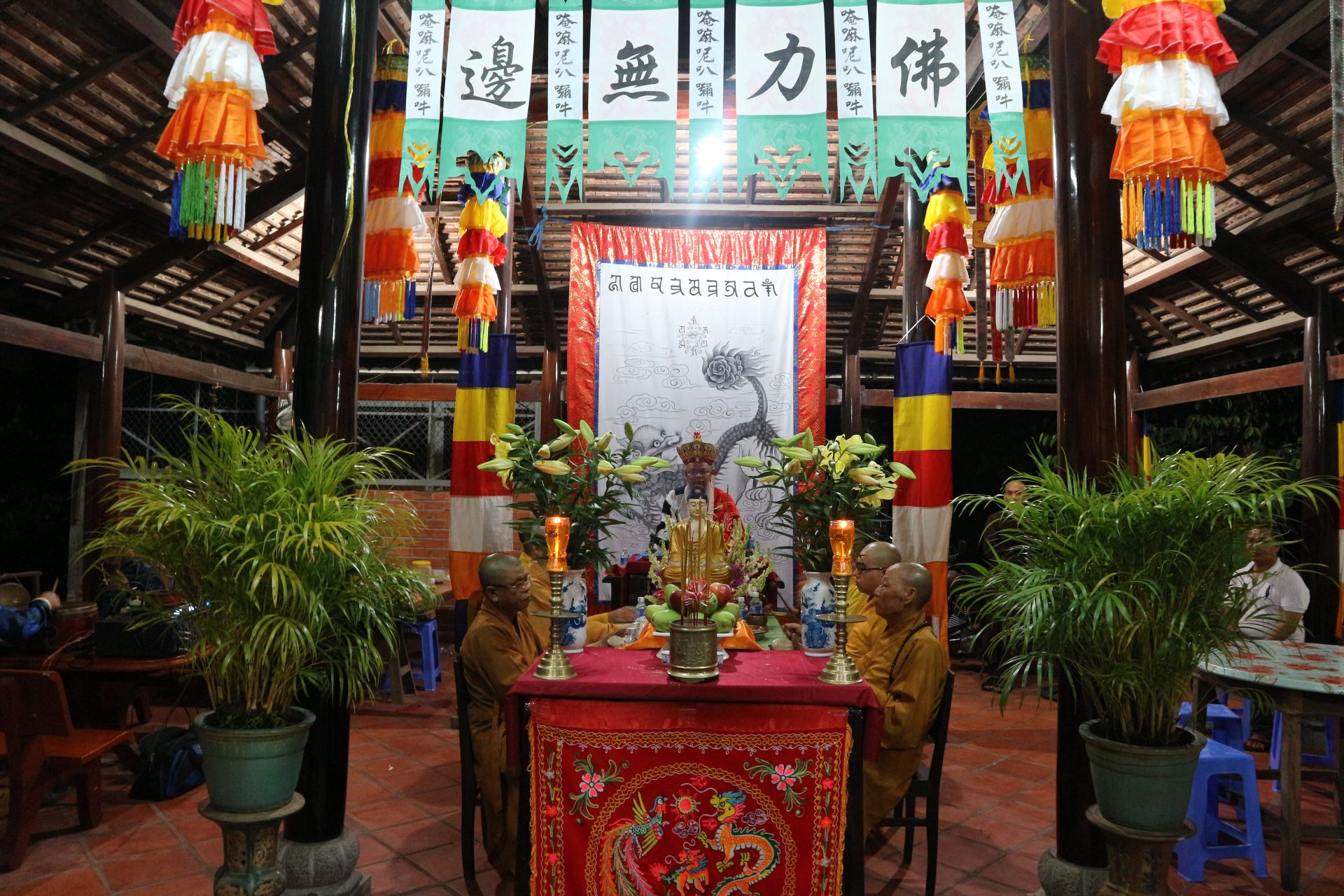
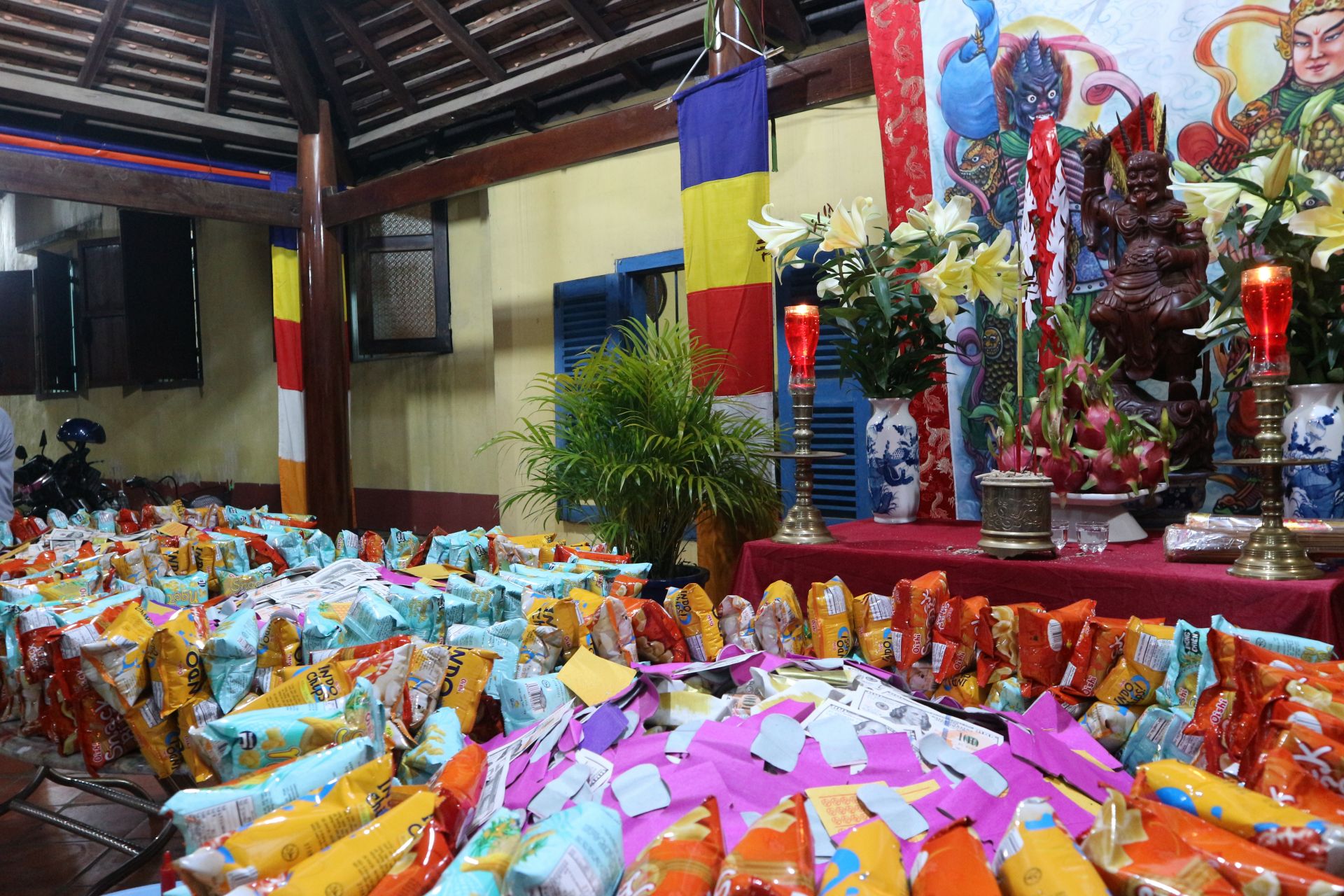
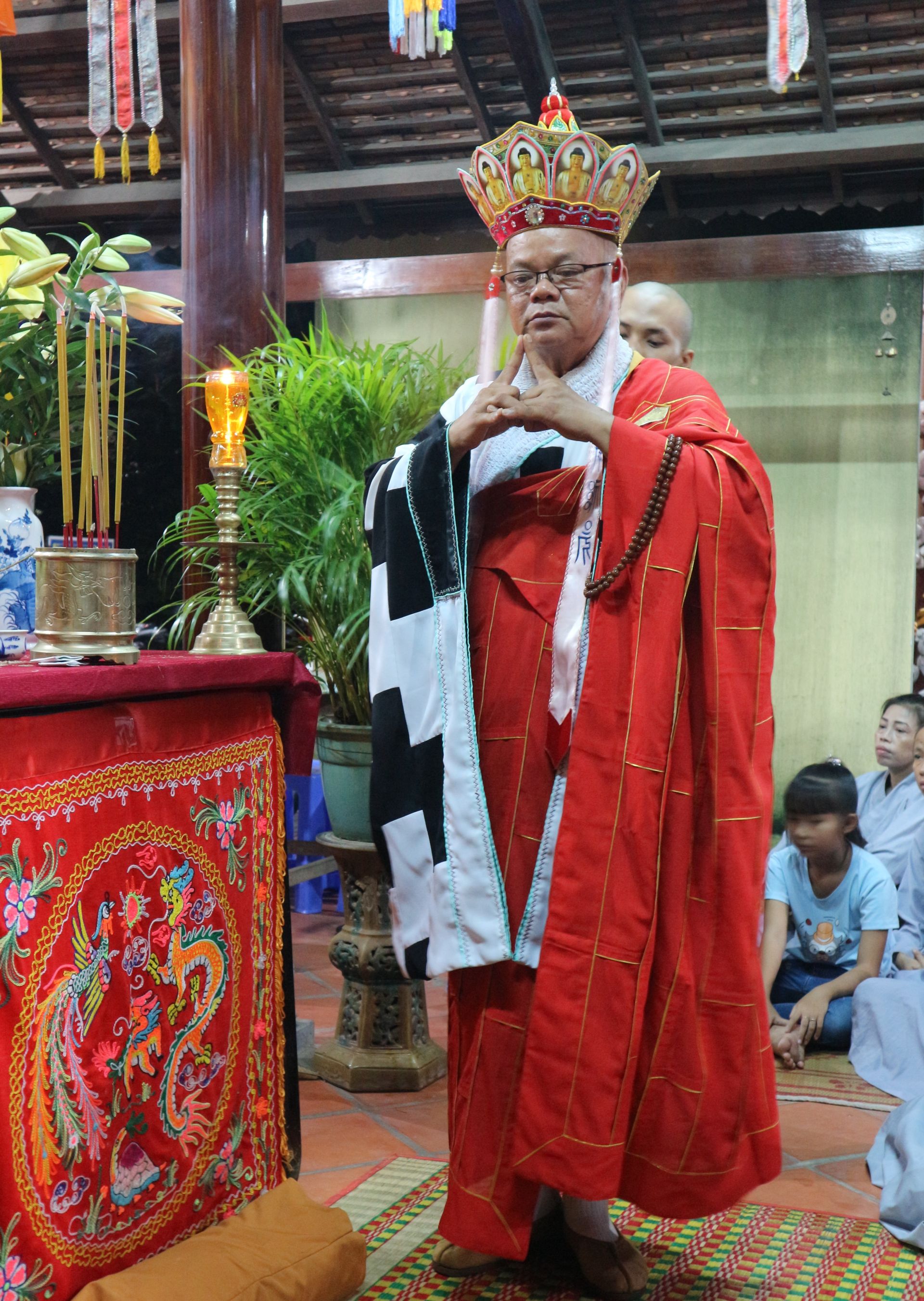
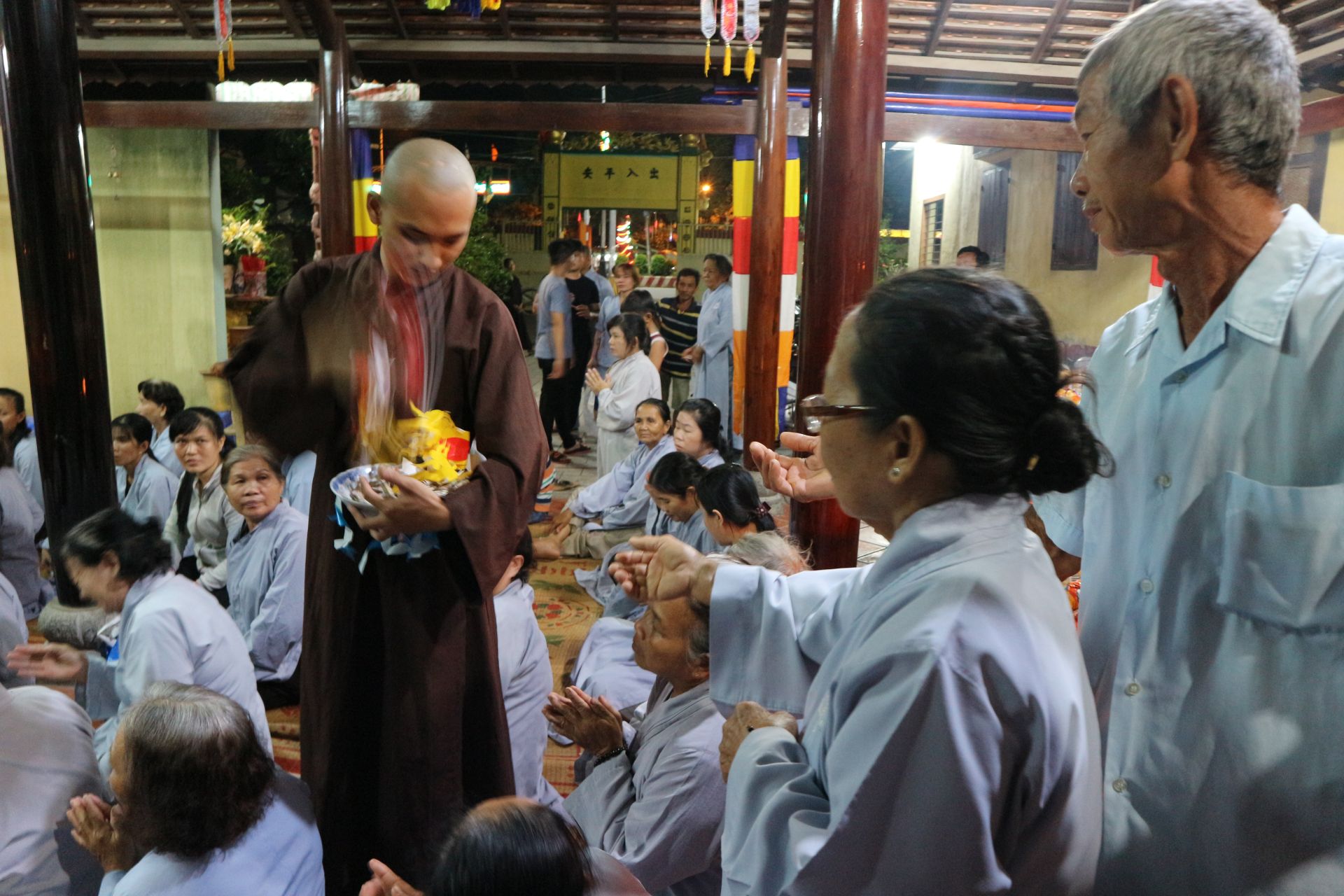




![[Photo] Prime Minister Pham Minh Chinh presides over the conference announcing the establishment of the International Finance Centre in Vietnam.](/_next/image?url=https%3A%2F%2Fvphoto.vietnam.vn%2Fthumb%2F1200x675%2Fvietnam%2Fresource%2FIMAGE%2F2025%2F12%2F21%2F1766309817714_ndo_br_dsc-3400-jpg.webp&w=3840&q=75)
![[Photo] Prime Minister Pham Minh Chinh presides over a meeting on private sector economic development.](/_next/image?url=https%3A%2F%2Fvphoto.vietnam.vn%2Fthumb%2F1200x675%2Fvietnam%2Fresource%2FIMAGE%2F2025%2F12%2F20%2F1766237501876_thiet-ke-chua-co-ten-40-png.webp&w=3840&q=75)













































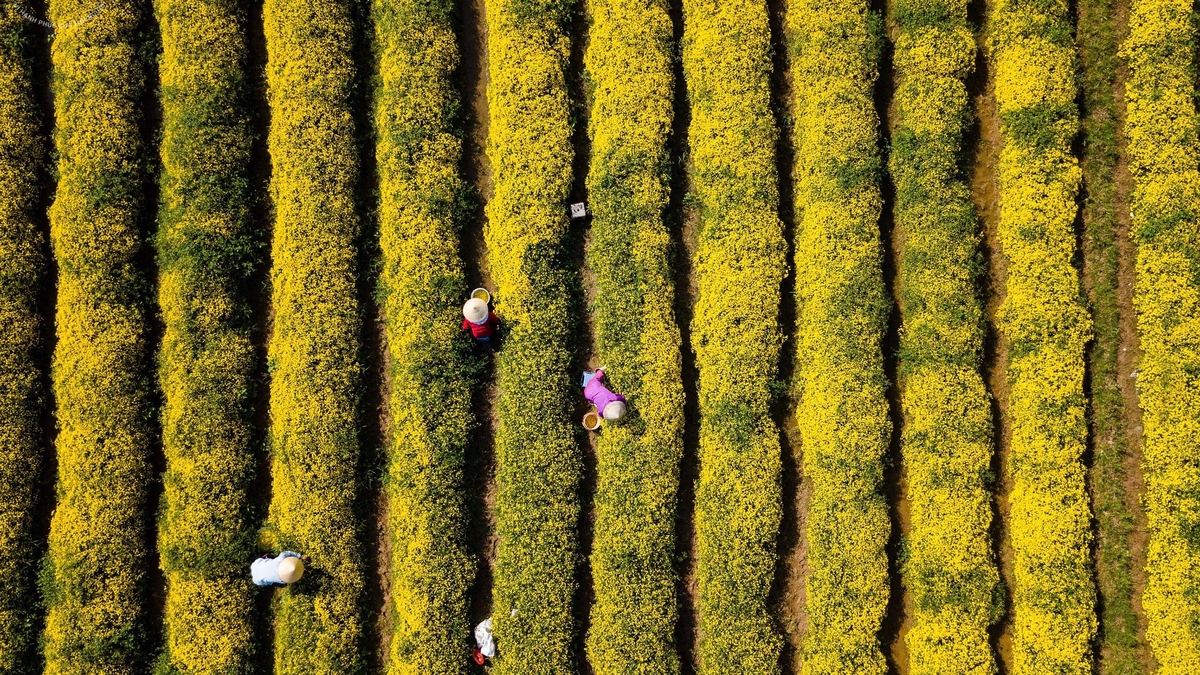










































Comment (0)